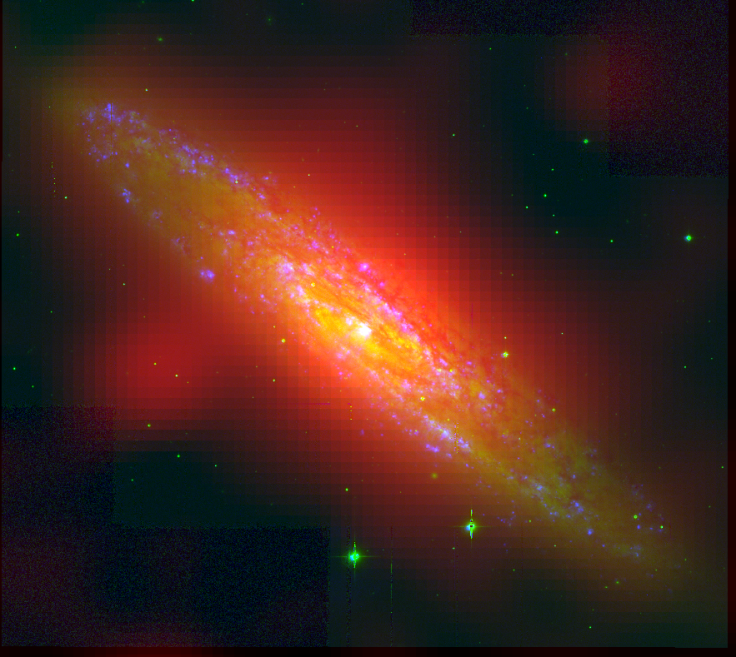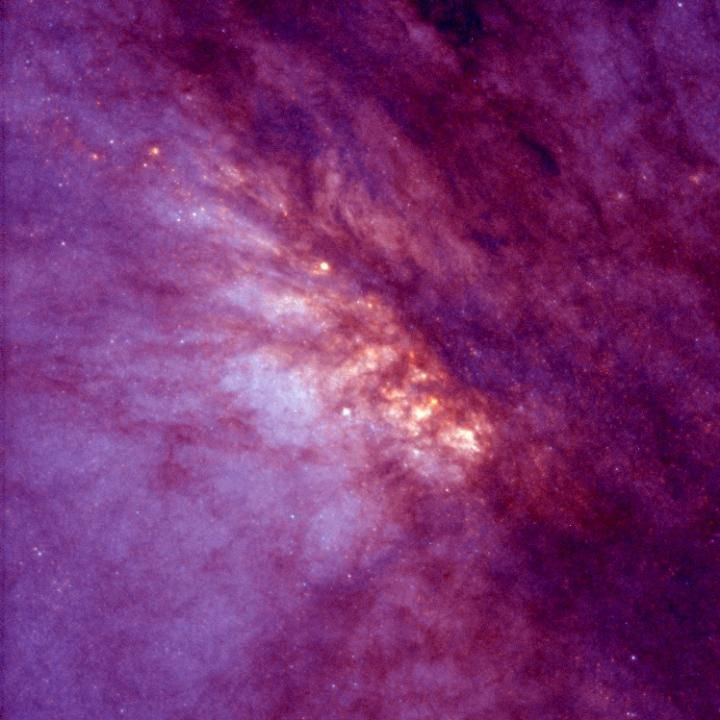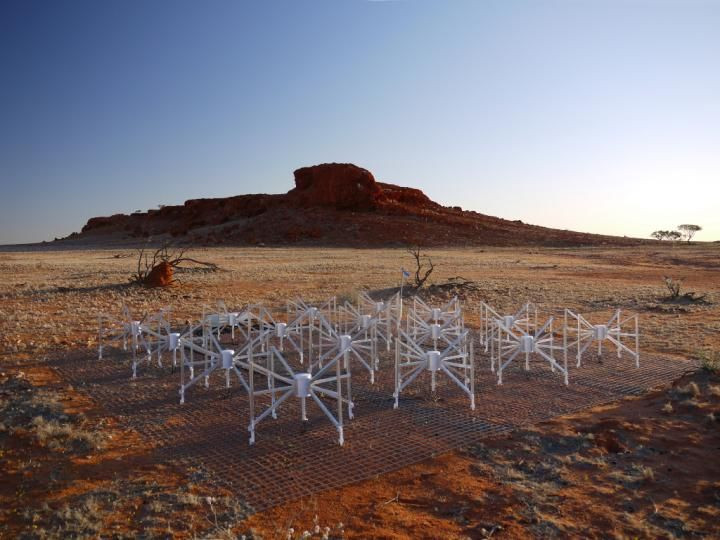Halo Of Nearby Starburst Galaxy Seen In Detail, To Aid Understanding Galactic Formation

Using a radio telescope in remote Western Australia, astronomers have observed in “unprecedented detail” the halo surrounding the galaxy NGC 253. Also known as Sculptor Galaxy, it is very close to us in cosmic terms — only 11.5 million light-years away from Earth — and is forming stars at a very rapid pace, about five solar masses a year which is much faster than the Milky Way.
It is called a starburst galaxy, referring to the rapid star-formation period it is going through. And that makes it very interesting to astronomers because by studying it, they can improve our understanding of how galaxies form, grow and evolve over time.
Read: Astronomers Spot An Ancient Starburst Galaxy

“We’re very fortunate to have such a great example of a starburst galaxy in our own cosmic backyard—it’s like having a galaxy-sized laboratory on hand to conduct experiments and test our theories,” Anna Kapinska, from the University of Western Australia and the International Centre for Radio Astronomy Research, said in a statement Monday on the ICRAR website.
The massive halo of gas, dust and stars around NGC 253, caused by the star formation and a “super-wind” originating in the galaxy’s core, was seen for the first time at low frequencies, below 300 MHz, using data from the GaLactic and Extragalactic All-sky MWA (GLEAM) survey, using the Murchison Widefield Array (MWA) radio telescope in outback Western Australia.

Kapinska, who was lead author of a new study published on the energy distribution and halo of the galaxy, said in the statement: “With the GLEAM survey we were able, for the first time, to see this galaxy in its full glory with unprecedented sensitivity at low radio frequencies. It’s remarkable how easily the MWA detected the diffuse halo, we managed it with just an hour of observing as the galaxy passed overhead.”
Titled “Spectral Energy Distribution and Radio Halo of NGC 253 at Low Radio Frequencies,” the study was published Tuesday in the Astrophysical Journal.
© Copyright IBTimes 2025. All rights reserved.





















